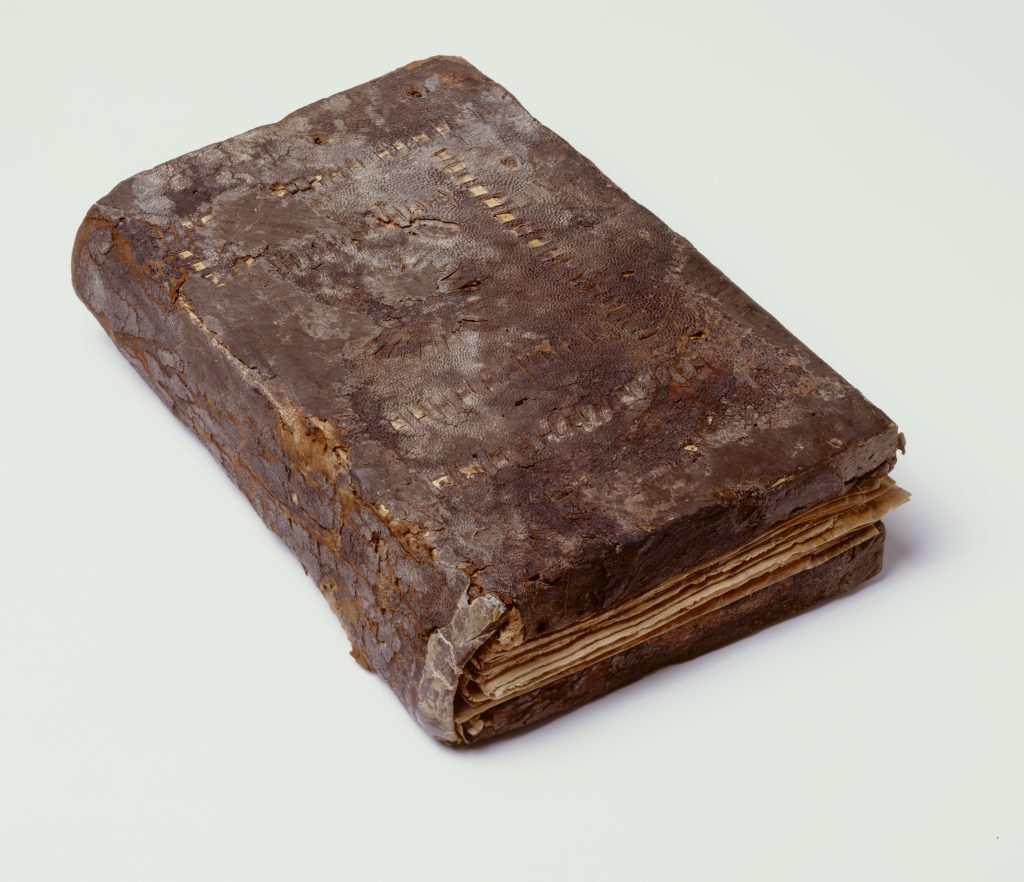
In our previous posts we have discussed “pagan” and “gnostic” influences in Coptic language magic, so readers would be forgiven for thinking that all such texts are full of Greek, Egyptian and Sethian deities. The bulk of our manuscripts, however, date to between the fifth and eleventh centuries CE, a period for most of which the majority of Egyptians were, at least nominally, adherents to some form of orthodox Christianity. Christianity was the dominant worldview, and the magical texts therefore reflect this, and seem to adhere to some kind of Christianity, even if they are not always strictly orthodox. But what does this “Christian magic” look like?
AMS 9 is a sixth-century codex owned by the Rijksmuseum van Oudheden in Leiden in the Netherlands. It probably comes from near Thebes (modern Luxor), is a good example of a text which fulfils the same function as the magical texts we have looked at so far, but which presents a worldview which is entirely Christian. The manuscript itself is in unusually good condition – its cover, bound in leather and decorated with parchment, survives intact, and almost all of its pages are readily legible. Anne Boud’hors has recently observed that its format and handwriting closely resemble other roughly-contemporary codices from the Theban region – a particularly close example is BM EA 71005, containing a narrative concerning the miracles of Shenoute of Atripe. Many of the other manuscripts Boud’hors discusses seem to have been produced by monks, who are regularly attested as scribes and book-binders in our sources. It is therefore possible, if not certain, that AMS 9 too was produced by a monastic copyist.
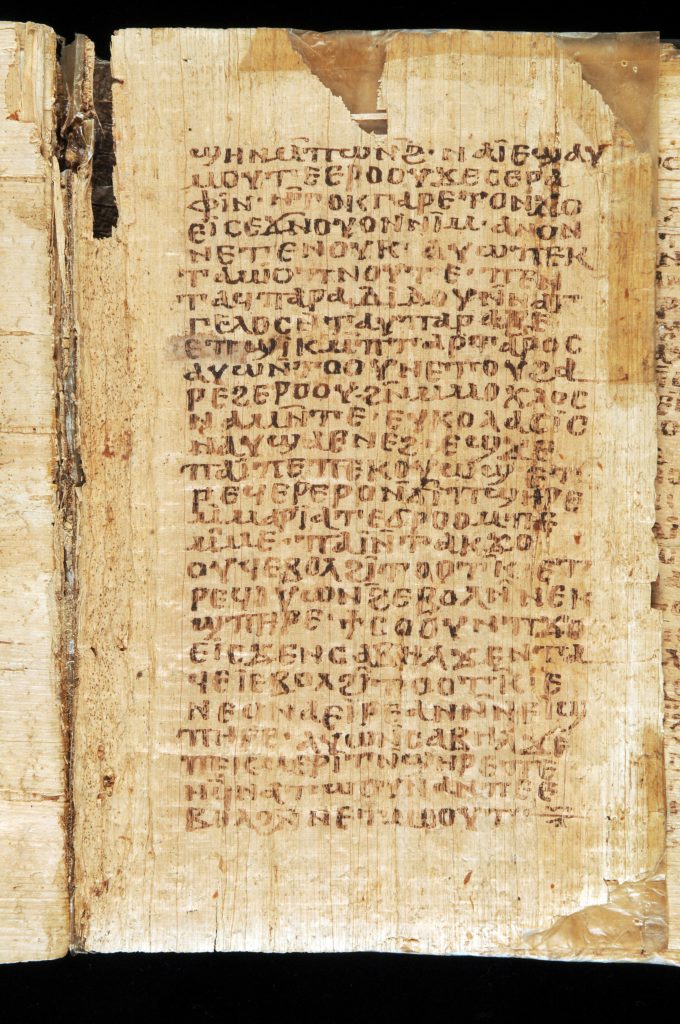
A page from AMS 9 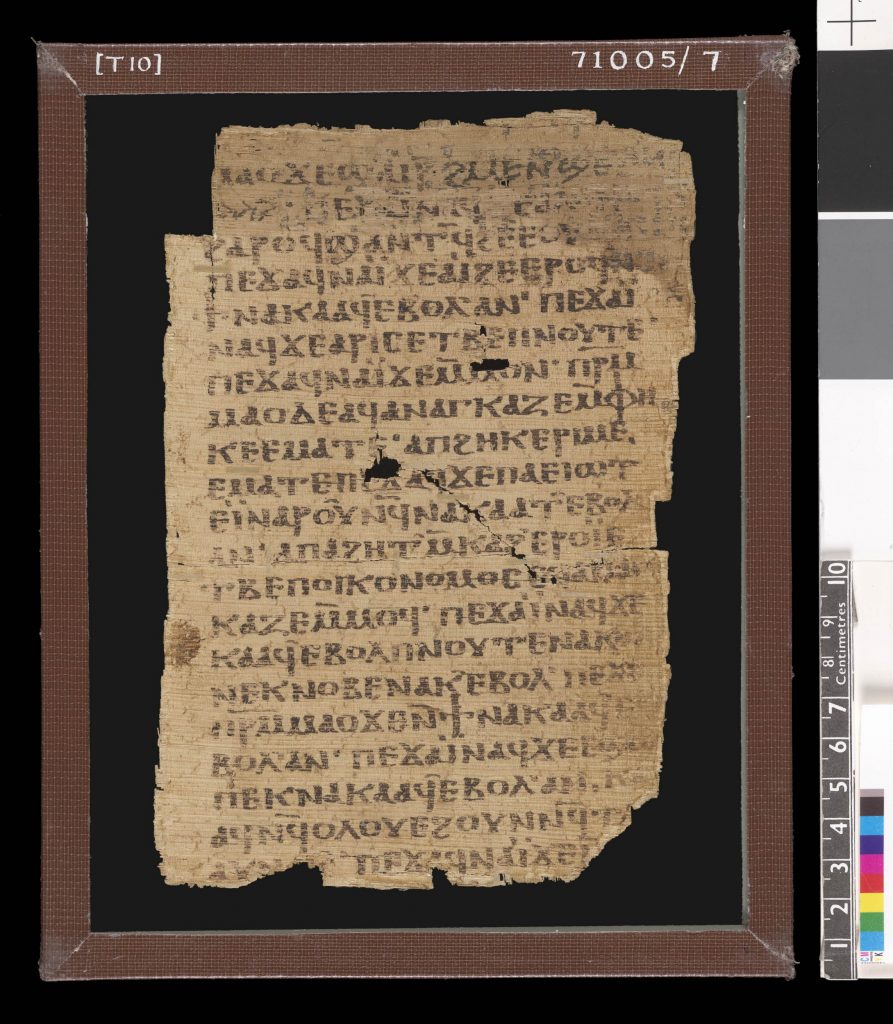
BM EA 71005
© The Trustees of the British Museum
Although it is in better condition than most, AMS 9 resembles several other codices from the Theban region, among them BM EA 71005 (6th-7th century CE), which contains a narrative concerning Shenoute of Atripe
The codex itself is a handbook containing a series of texts intended to be copied as amulets. The first of these is a prayer attributed to “Gregory the Great”. This “Gregory” is probably one of two saints from Cappadocia in modern Turkey – either Gregory Thaumatourgos (“the wonder-worker”, ca. 212-270 CE) or Gregory of Nazianzus (ca. 329-389 CE); a Greek parallel to the prayer suggests that it is probably the first of these. The prayer itself begins with a discussion of its powers and use:
A prayer and an exorcism which I wrote, I, Gregory, the servant of the Living God, that it might become an amulet to all who receive it and who read it, that it might overthrow every operation that will come about through evil men, that is, sorceries (mnt-ref-hik) and enchantments (mnt-ref-moute) and bindings (mnt-ref-mour) of men and swelling sicknesses and malice and envy and failure…
AMS 9 fol. 1r ll.1-16
The prayer that follows contains few of the characteristic features of other “magical” texts – magical names, characters, and vowel sequences are absent. The text seems to present itself as a particularly powerful prayer, in part through its connection to Gregory the Great, a saint. The fact that it promises to protect against “enchantments”, and later, “magicians” (magoi), also implies that its user didn’t think of it as being “magical”, although this is also true of other, more typically “magical” texts, and its use as a written amulet suggests that it is useful to compare it to other magical material, regardless of its self-conception.
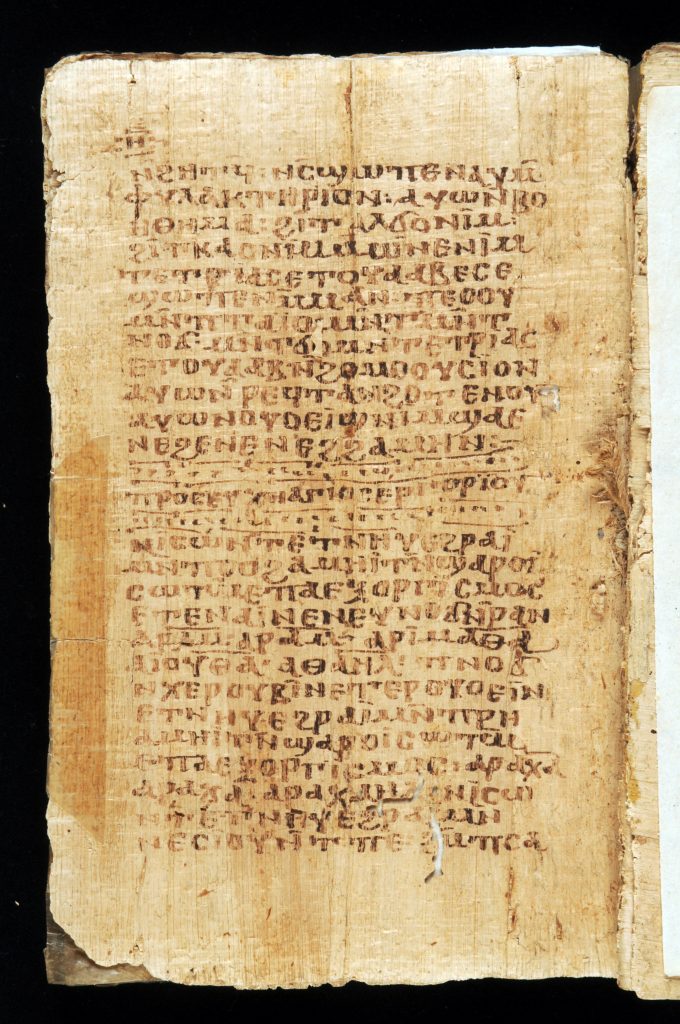
The next text is an unnamed prayer, but one whose contents are less orthodox, using a few “magical names” and calling upon beings who seem to belong to non-canonical understandings of Christianity:
Oh creatures who rise with the moon, come to me. Hear my exorcism, you whose great names are Aram Aram Arimatha…
AMS 9 fol. 8v ll.16-19
The next two texts are a well-known pair of documents – the letters of Jesus and Abgar. Although these texts were apocryphal, and thus were never included in the canonical Christian Bible, ancient Christians were fascinated by these letters, claiming as they did to contain the only writing directly attributed to Jesus. In these texts, Abgar is the king of Edessa, a city in modern Turkey, who is said to have heard of Jesus, and to have written him a letter inviting him to come and live in Abgar’s city, and replace him as king. In his response, Jesus praises Abgar for believing in him despite never having met him, and although he politely declines the invitation to visit, he promises that pinning the letter (or a copy of it) in any place will protect it from diseases and evil spirits. This promise is the reason for the text’s inclusion here, and in several other manuscripts from Egypt, not simply as a text to be read, but to be copied and used as a powerful amuletic object.
The last of the longer texts is a prayer which begins with a series of magical words said to be Hebrew. This provides us with a hint to its origin; the prayer is known from parallels to be that supposedly spoken by Judas Cyriacus, another figure from popular Christian literature. He turns up in the story of how Helena (ca. 248-328 CE), the mother of the Emperor Constantine, found the remains of the True Cross on which Jesus was crucified. In this story, Judas is a Jewish man living in Jerusalem who is forced by Helena to help her find the cross, and he uses this prayer to call out to God to help him; the location of the cross is revealed when it lets out a loud cry and begins to leak a trail of sweet perfume into the air in response to the prayer.
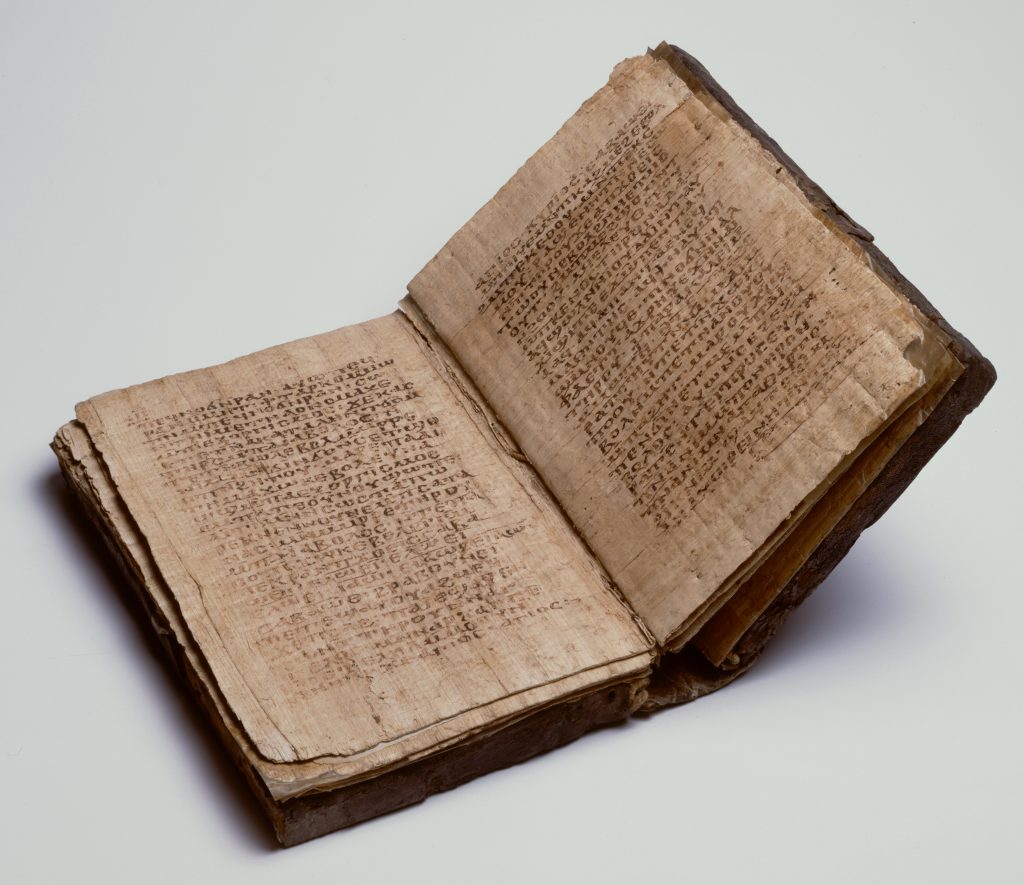
The codex ends with a series of shorter texts, each, however, very important. The first is a list of the names of the Seven Sleepers of Ephesus, a group of third-century Christians said to have been put into a miraculous fifty-year sleep by God to save them from pagan persecution. The second is the names of the 40 Martyrs of Sebaste, forty Roman soldiers sentenced to freeze to death by the Emperor Licinius (ruled 308-324 CE) for refusing to abandon the Christian faith. Again, like the longer prayers, these texts would have been copied and worn or displayed for divine protection.
The final section consists of the first lines (“incipits”) of the four canonical gospels and the beginning of Psalm 90 (91 according to Western numbering). Yet again, these would have been copied onto amulets, which could have been worn for protection; we have many surviving examples of such texts. These short passages were presumably meant to stand in for the entire text of each Gospel or Psalm, drawing upon the divine power of the Word of God. While these are again functionally indistinguishable from short texts mentioning non-Christian figures or magical names used as amulets, it seems that many of the Church Fathers, the leading figures of Late Antique orthodox Christianity, might not have disproved of using Biblical passages as amulets, even if they didn’t believe that the amulets would work without the faith and orthodoxy of their wearers.
AMS 9 is thus a very Christian “magical” handbook, a list of texts which its user could have copied to create amulets to protect individuals, their houses, and their livestock. All of its texts conform to a Christian worldview, even if they are functionally and formally similar to less orthodox material. They draw upon different aspects of the Christian concept of divine power: the ability of saints (Gregory and Judas) to provide particularly efficacious prayers, and the power of the written Word of God – either the canonical gospels and psalms, or the apocryphal words of Jesus. To the composer(s), compiler(s), and copyist of this text, orthodox Christianity offered possibilities for protective ritual practices just as rich as Egyptian or Greek “paganism”, or the complex cosmologies of “gnosticism”.
Bibliography and Further Reading
The official page for AMS 9 on the Rijksmuseum van Oudheden website URL
Boud’hors, Anne. “À la récherche des manuscrits coptes de la région thébaine.” In Scripta Coptice (In Honour of Bentley Layton), edited by David Brakke, Stephen J. Davis and Stephen Emmel. Leuven: Peeters, forthcoming.
Forthcoming discussion of the physical characteristics of Coptic books from the Theban region in Late Antiquity.
Kotsifou, Chrysi. “Bookbinding and manuscript illumination in Late Antique and early Medieval monastic circles in Egypt.” In Eastern Christians and their Written Heritage: Manuscripts, Scribes and Context, edited by Juan Pedro Monferrer-Sala, Herman Teule & Sofía Torallas Tovar. Leuven: Peeters, 2012, 213–244. URL
A discussion of the evidence for book production in Late Antique Egypt, focusing on the role of monks.
Drijvers, Jan Willem. Helena Augusta: The Mother of Constantine the Great and the Legend of Her Finding of the True Cross. Leiden, Brill, 1992.
A discussion of the legends of Helena’s discovery of the True Cross; the legend of Judas Cyriacus can be found on pages 165-180.
Pleyte, Willem, and Pieter A. A. Boeser. Manuscrits coptes du Musée d’Antiquités des Pays-Bas à Leide. Leiden: E. T. Brill, 1897, pp. 441-79.
Original publication of the Coptic text of AMS 9.
Meyer, Marvin W., and Richard Smith. Ancient Christian Magic: Coptic Texts of Ritual Power. Princeton (New Jersey): Princeton University Press, 1999, no. 134, pp. 311-322.
English translation of AMS 9.
Sanzo, Joseph E. Scriptural Incipits on Amulets from Late Antique Egypt Text, Typology, and Theory. Tübingen: Mohr Siebeck, 2014. URL
A discussion of the use of Biblical and apocryphal texts as amulets in Late Antique Egypt; AMS 9 is discussed on pages 82-83.
